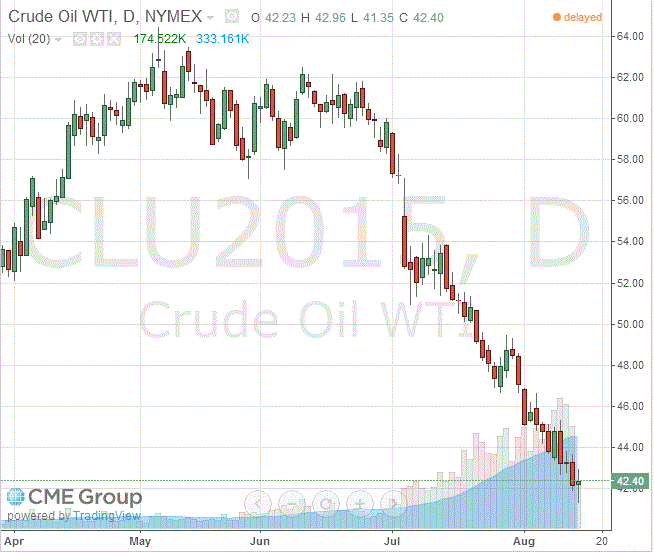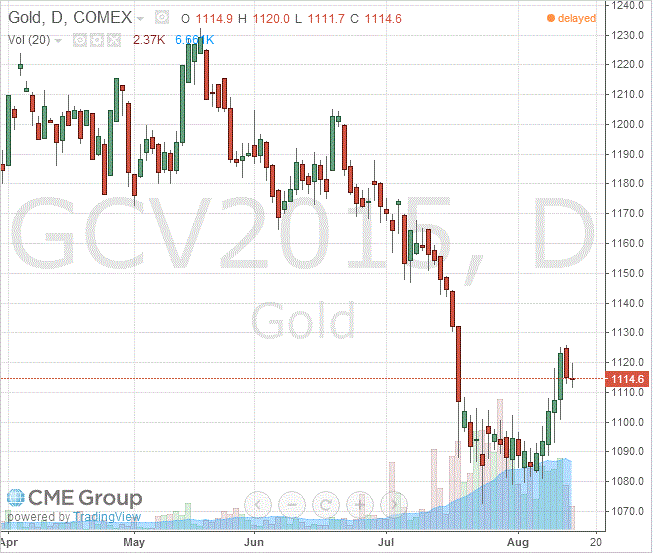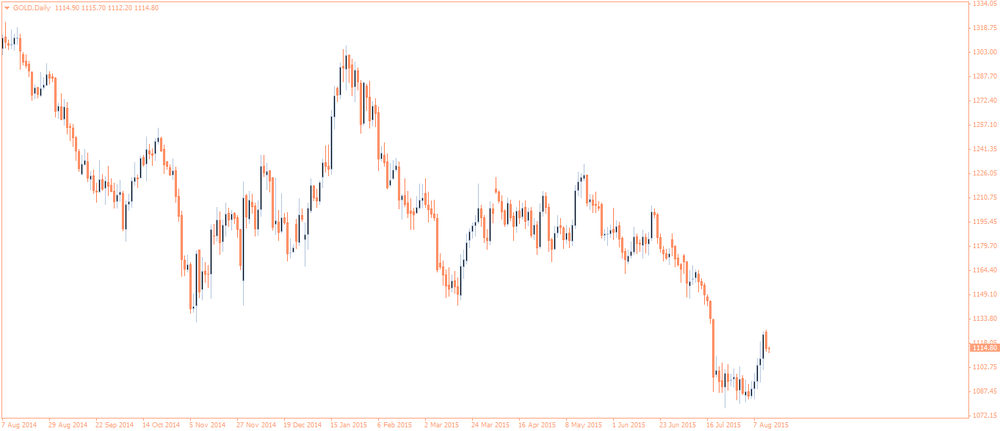Noticias del mercado
-
17:42
Oil prices traded mixed on a stronger U.S. dollar and on concerns over the global oil glut
Oil prices traded mixed on a stronger U.S. dollar and on concerns over the global oil glut. The U.S. dollar rose against other currencies after the release of the U.S. economic data. The U.S. producer price index increased 0.2% in July, exceeding expectations for a 0.1% gain, after a 0.4% rise in June.
On a yearly basis, the producer price index decreased 0.8% in July, beating forecasts of a 0.9% decline, after a 0.7% fall in June.
The rise was partly driven by higher services prices, which were up 0.4%.
The producer price index excluding food and energy climbed 0.3% in July, exceeding expectations for a 0.1% gain, after a 0.3% increase in June.
On a yearly basis, the producer price index excluding food and energy climbed 0.6% in July, beating forecasts of a 0.5% increase, after a 0.8% rise in June.
The U.S. industrial production rose 0.6% in July, exceeding expectations for a 0.3% increase, after a 0.1% gain in June. June's figure was revised down from a 0.2% rise.
The increase was driven by higher factory output. Factory output climbed by 0.8% in July.
Mining output climbed 0.2% in July, while utilities production declined 1.0%.
Capacity utilisation rate increased to 78.8% in July from 77.7% in June, in line with expectations. June's figure was revised down 77.8%.
A slowdown in China's economy and high oil production also weighed on oil prices.
WTI crude oil for September delivery increased to $42.40 a barrel on the New York Mercantile Exchange.
Brent crude oil for September decreased to $49.00 a barrel on ICE Futures Europe.
-
17:22
Gold rose in the morning trading session, but dropped after the release of the U.S. economic data as the U.S. dollar strengthened
Gold rose in the morning trading session, but dropped after the release of the U.S. economic data as the U.S. dollar strengthened. The U.S. producer price index increased 0.2% in July, exceeding expectations for a 0.1% gain, after a 0.4% rise in June.
On a yearly basis, the producer price index decreased 0.8% in July, beating forecasts of a 0.9% decline, after a 0.7% fall in June.
The rise was partly driven by higher services prices, which were up 0.4%.
The producer price index excluding food and energy climbed 0.3% in July, exceeding expectations for a 0.1% gain, after a 0.3% increase in June.
On a yearly basis, the producer price index excluding food and energy climbed 0.6% in July, beating forecasts of a 0.5% increase, after a 0.8% rise in June.
The U.S. industrial production rose 0.6% in July, exceeding expectations for a 0.3% increase, after a 0.1% gain in June. June's figure was revised down from a 0.2% rise.
The increase was driven by higher factory output. Factory output climbed by 0.8% in July.
Mining output climbed 0.2% in July, while utilities production declined 1.0%.
Capacity utilisation rate increased to 78.8% in July from 77.7% in June, in line with expectations. June's figure was revised down 77.8%.
October futures for gold on the COMEX was trading at 1114.60 dollars per ounce.
-
10:47
Global demand for gold drops 12% in the second quarter
The World Gold Council (WGC) released its report on Thursday. Global demand for gold dropped 12% in the second quarter due to lower demand from Asia. Demand for gold totalled 914.9 tons in the second quarter, down from 1,038 tons during the same period in 2014.
Global demand for jewellery slid by 14% in the second quarter to 513.5 tons, down from 594.5 tons a year ago. Jewellery makes up about 60% of global gold consumption.
According to the World Gold Council, annual gold demand is expected to be between 4,200 tons and 4,300 tons. Demand in India and China in 2015 is expected to be 900-1,000 tons.
-
10:17
Foreign direct investment inflows in China rise by 5.2% in July
Foreign direct investment inflows in China rose by 50.6 billion yuan in July, up 5.2% from a year earlier.
Foreign direct investment inflows in June increased by an annual rate of 0.7%.
In the first seven months, foreign direct investment inflows climbed by 7.9% to 471.1 billion yuan.
The biggest contributor was the services sector, up 19.6% from a year earlier.
The most investment came from France.
-
09:12
Oil prices declined further
West Texas Intermediate futures for September delivery fell to $42.01 (-0.52%), while Brent crude slid to $49.58 (-0.10%). Investors are concerned that a weaker yuan may curb China's demand for crude in an oversupplied market, while China has been the second-biggest consumer of oil.
The latest data by the Energy Information Administration showed that U.S. crude inventories declined, although the decline was less than analysts had expected. However stockpiles may start building up again with refineries producing 240,000b barrels a day.
Prospects of additional exports from Iran add to supply glut concerns. Most experts believe Iran stores 30 million to 40 million barrels of oil in tankers, but an Israel-based maritime surveillance company Windward estimates that Iran has 50 million barrels of oil ready to be sold.
-
08:47
Gold declined slightly
Gold slid to $1,113.70 (-0.17%) as strong U.S. retail sales data boosted the dollar and raised expectations of an interest rate hike by the Federal Reserve in the near future. Gold and the greenback typically move in opposite directions and the dollar's strength suggests the bullion's weakness. In addition to that higher interest rates would harm demand for the non-interest bearing precious metal.
Commerzbank analyst Eugen Weinberg said that the devaluation of the yuan is positive for gold in the longer term if it stimulates demand for bullion as a safe haven from currency volatility; however dollar strength keeps the metal under pressure.
-
01:04
Commodities. Daily history for Aug 13’2015:
(raw materials / closing price /% change)
Oil 43.31 +0.02%
Gold 1,125.00 +0.12%
-


